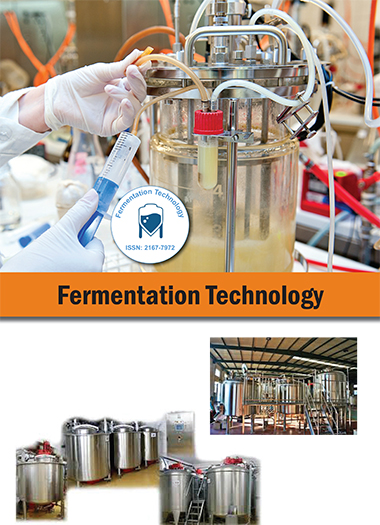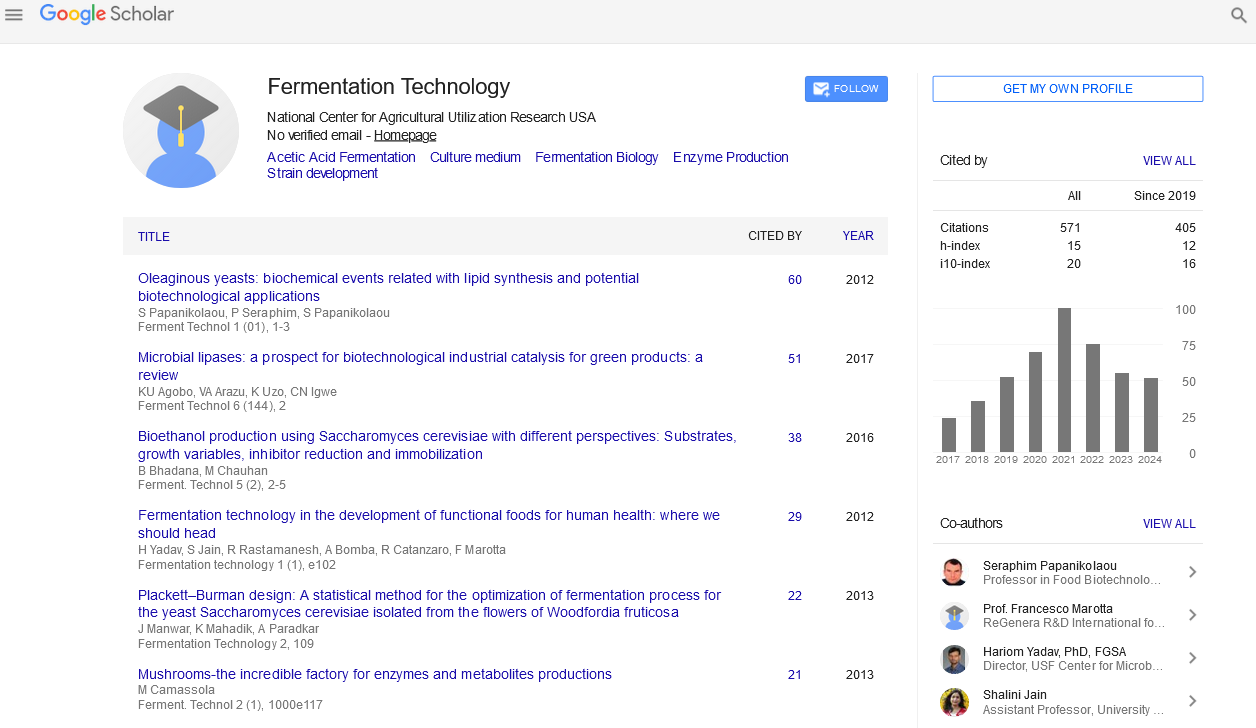Indexed In
- Open J Gate
- Genamics JournalSeek
- Access to Global Online Research in Agriculture (AGORA)
- RefSeek
- Hamdard University
- EBSCO A-Z
- OCLC- WorldCat
- Publons
Useful Links
Share This Page
Journal Flyer

Open Access Journals
- Agri and Aquaculture
- Biochemistry
- Bioinformatics & Systems Biology
- Business & Management
- Chemistry
- Clinical Sciences
- Engineering
- Food & Nutrition
- General Science
- Genetics & Molecular Biology
- Immunology & Microbiology
- Medical Sciences
- Neuroscience & Psychology
- Nursing & Health Care
- Pharmaceutical Sciences
Evaluation of the effectiveness of a new probiotic preparation for animals
World Congress on Beneficial Microbes: Food, Pharma, Aqua & Beverages Industry
August 25-27, 2015 Valencia, Spain
Katarzyna Slizewska
Lodz University of Technology, Poland
Posters-Accepted Abstracts: Ferment Technol
Abstract:
The new probiotic preparation is based on Lactobacillus bacteria: Lactobacillus paracasei LOCK 0920, Lactobacillus brevis LOCK 0944, and Lactobacillus brevis LOCK 0945. These bacteria have been examined pursuant to the recommendations stipulated by the FAO/WHO and the EFSA, deposited with the national depositories and protected by awarded or pending patents. The preparation also contains the yeast Saccharomyces cerevisiae LOCK 0140. The study examined the ability of the new probiotic preparation to detoxify aflatoxin B1 (AFB1) and ochratoxin A (OTA) in the gastrointestinal tract of chickens (in vivo tests). While there are many works concerning the adverse effect of mycotoxins, there is scarce research on their biological detoxification in animal studies. An in vivo study was conducted on 192 Ross broiler chickens divided into 12 groups, which were given feed that was supplemented with the probiotic preparation and contaminated with mycotoxins (AFB1 or OTA at a concentration of 1 and 5 mg/kg of feed). The probiotic preparation, containing 1010 cells Lactobacillus bacteria and 106 cells Saccharomyces cerevisiae per kg, was added to the feeds in the following amounts: 2 g/kg of starter feed and 1 g/kg of grower and finisher feeds. The objective of the study was to determine whether the probiotic preparation added to feeds contaminated with AFB1 or OTA would improve the production and health indicators of broiler chickens and whether it can be used for mycotoxicosis prevention in chickens. It has been shown that giving chickens feeds contaminated with AFB1 or OTA and supplemented with the probiotic preparation improves chicken raising parameters such as chicken weight gain, feed consumption and conversion, the European Broiler Index, as well as liver and kidney weight. This effect is particularly pronounced in chickens fed with feeds contaminated with higher mycotoxin concentrations. The addition of the probiotic preparation to feeds contaminated with AFB1 or OTA increases the amount of toxins excreted with feces and lowers their accumulation in the liver and kidneys. The amount of toxins in the liver and kidneys, irrespective of the initial toxin concentration in the feed, is lower by 50-70% in the case of feed contaminated with AFB1 and by 30-50% the case of feed contaminated with OTA as compared to the group of chickens given contaminated feeds without the addition of the probiotic. The presence of AFB1 in the feed (both at a concentration of 1 and 5 mg/kg) is toxic to the liver. At the lower concentration, OTA is toxic to the liver, while at the higher concentration, it is toxic to both the liver and the kidneys. The histological changes identified in the livers of chickens given feeds contaminated with AFB1 or OTA and in the kidneys of chickens given feeds contaminated with OTA and supplemented with the probiotic are smaller than the changes identified in chickens given the corresponding contaminated feeds without the addition of the probiotic. The results presented in the work provide comprehensive evidence proving that the probiotic preparation may detoxify AFB1 and OTA in feeds and in the gastrointestinal tract of chickens. The use of one product, which is both a probiotic growth stimulator and a mycotoxin detoxifier, is a novel solution.
Biography :
Katarzyna Slizewska works at the Institute of Fermentation Technology and Microbiology at the Faculty of Biotechnology and Food Scientific, Lodz University of Technology in Poland. Her main scientific interests and research are lactic acid bacteria, probiotics for humans and animals, prebiotics and synbiotics. She is the author of over 200 papers, including 29 papers published in peer-reviewed journals.

